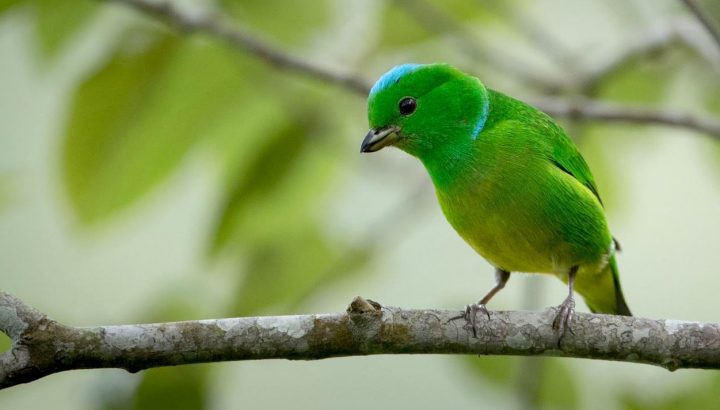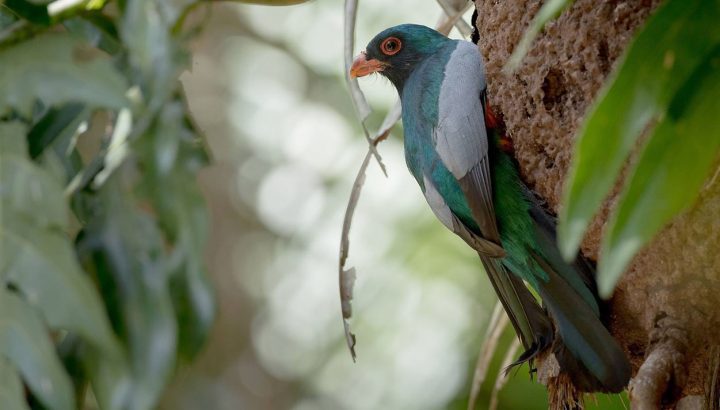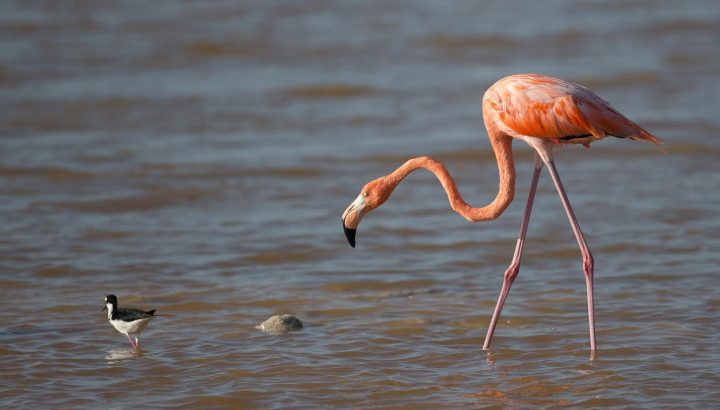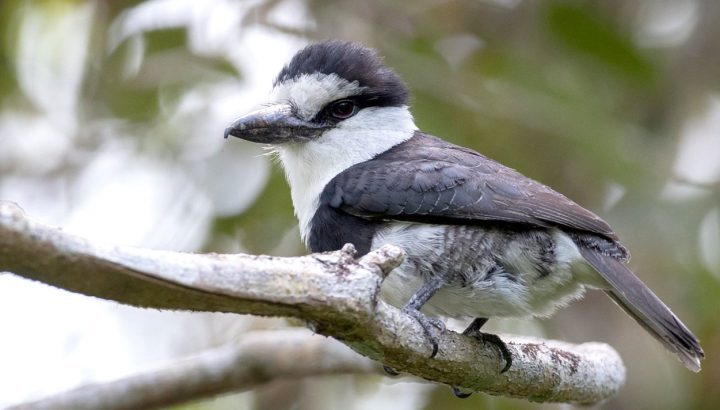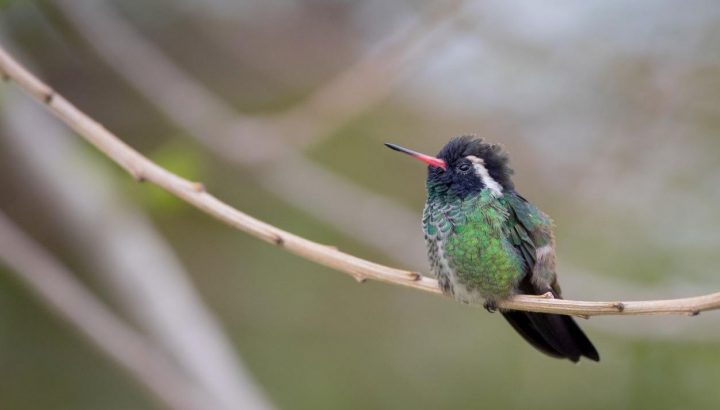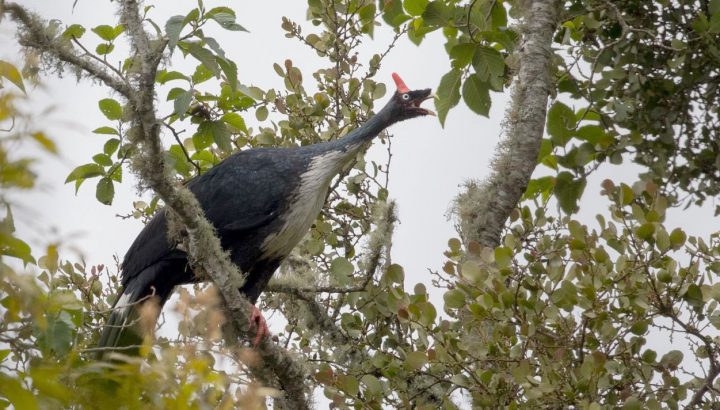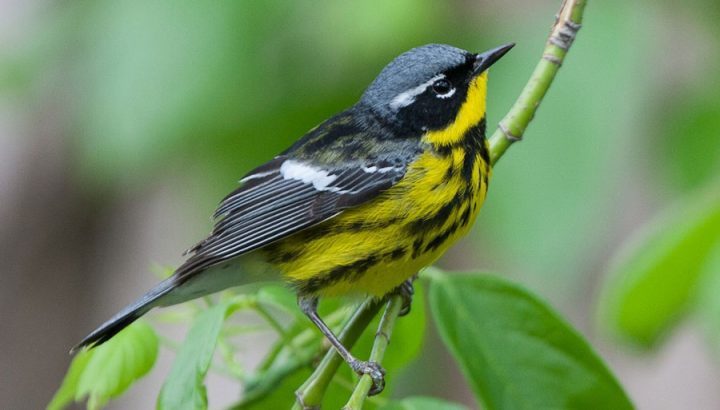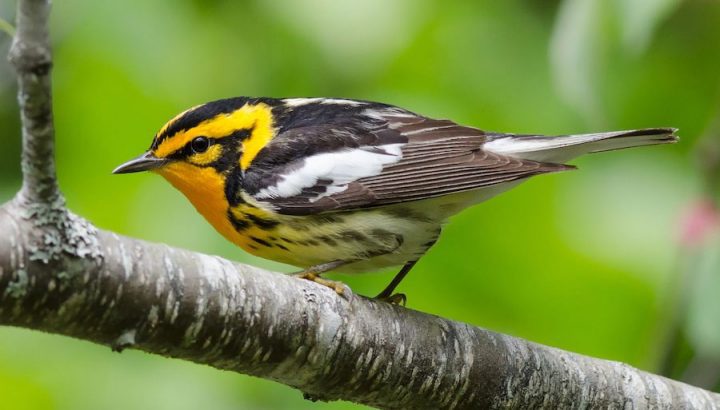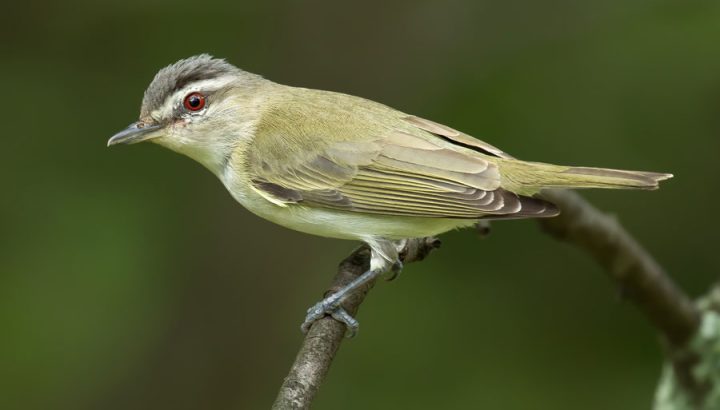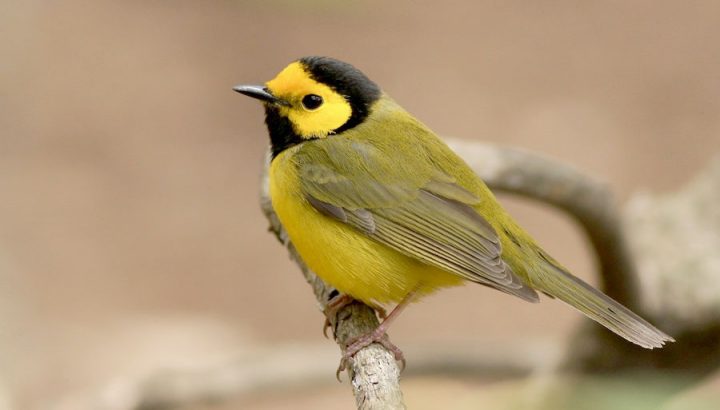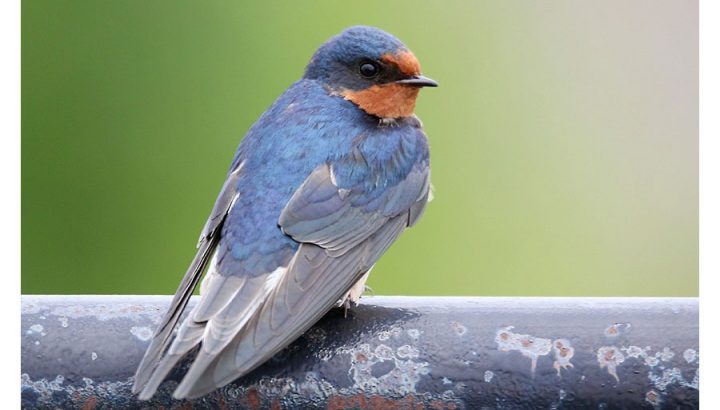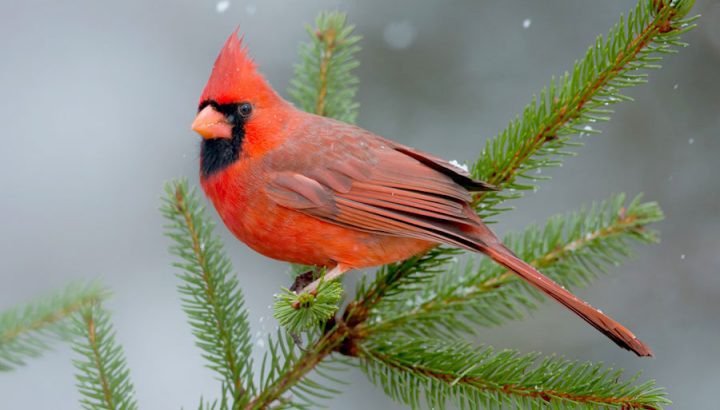Migrants Galore in Yucatán As Team Sapsucker Scouts For Global Big Day (2017)
By Hugh Powell
May 12, 2017
Blue-crowned Chlorophonia in Guatemala by Ian Davies. 
Slaty-tailed Trogon in Guatemala by Ian Davies. 
Black-necked Stilt and American Flamingo in Mexico by Chris Wood. 
White-necked Puffbird in Guatemala by Ian Davies. 
White-eared Hummingbird in Guatemala by Ian Davies. 
Horned Guan in Guatemala by Ian Davies.
Birders the world over are giving their optics a last polish and planning their morning routes as we approach the start of the 3rd annual Global Big Day. Anyone can participate simply by entering one or more eBird checklists anytime this Saturday, May 13. Last year, more than 17,000 bird watchers tallied more than 60% of all the world’s bird species in a single gargantuan day. What will happen this year?
For their part, Team Sapsucker, the Cornell Lab’s birding team, is in the Yucatán Peninsula—one of the richest birding regions in the Americas and a crucial migration and wintering area for dozens of North American breeding birds. The area is so thick with birds that the Sapsuckers, for the first time ever, have chosen to split into 3 teams—one each in Mexico, Belize, and Guatemala—to cover all the possibilities.
The Yucatán Peninsula’s extensive forests harbor endemic species that occur nowhere else, as well as tropical lovelies like Slaty-tailed Trogons and Blue-crowned Chlorophonias, plus songbirds familiar to many a U.S. and Canadian bird watcher. Despite the fact that spring warblers arrived in the U.S. a couple of weeks ago, migration is by no means over in the Yucatán.
“I’ve been blown away at the number of migrants,” says Marshall Iliff, who’s leading the Sapsucker team in Guatemala. “I was thinking, migration has already wound down in Texas, so there’s probably not that much down here. But I’m just so wrong.”

Among the migrants still heading north is the Magnolia Warbler. Photo by David Disher/Macaulay Library. 
Blackburnian Warblers have been traveling from northern South America and stop in the Yucatán to refuel before crossing the Gulf of Mexico. Photo by Alix d'Entremont/Macaulay Library. 
Red-eyed Vireos spend the winter in the Amazon basin, and then funnel through the Yucatán before flooding eastern North America's forests. Photo by JMC Nature Photos via Birdshare. 
Even a few Hooded Warblers are still on the move. Photo by Evan Lipton/Macaulay Library. 
Migrating Barn Swallows flitted through the sky as the team scouted in Mexico. Photo by Tim Avery/Macaulay Library. 
Strangely enough, Northern Cardinals will be one of the hardest birds for the Guatemala team to find. Photo by Corey Hayes via Birdshare.
So far the team has seen Magnolia, Blackburnian, Blue-winged, Hooded, and Yellow Warblers, plus, Iliff says, “a ton of Red-eyed Vireos—they’re silent in the forest, but you find a fruiting tree and there’s a half dozen in there.” The vireos and the Blackburnian Warblers are on their way back from South America, stopping to refuel in the Yucatán’s strategically placed forests before their next long flight across the Gulf of Mexico.
In each location—Mexico, Belize, and Guatemala—the Sapsucker mini-teams have joined forces with strong local birding communities. In Mexico, Chris Wood, Jessie Barry, and Viviana Ruiz-Gutierrez are joined by two community bird monitors, Jesus Bobadilla and Angel Castillo, plus Rafael Calderon of the Mexican conservation group CONABIO. On scouting runs, migrating Barn and Bank Swallows flitted through the skies as the team crept up on Yucatán endemics like Orange Oriole and Gray-throated Chat. According to Wood, at least 16 groups of community monitors and 8 children’s groups will be running their own Global Big Days across Mexico on Saturday.
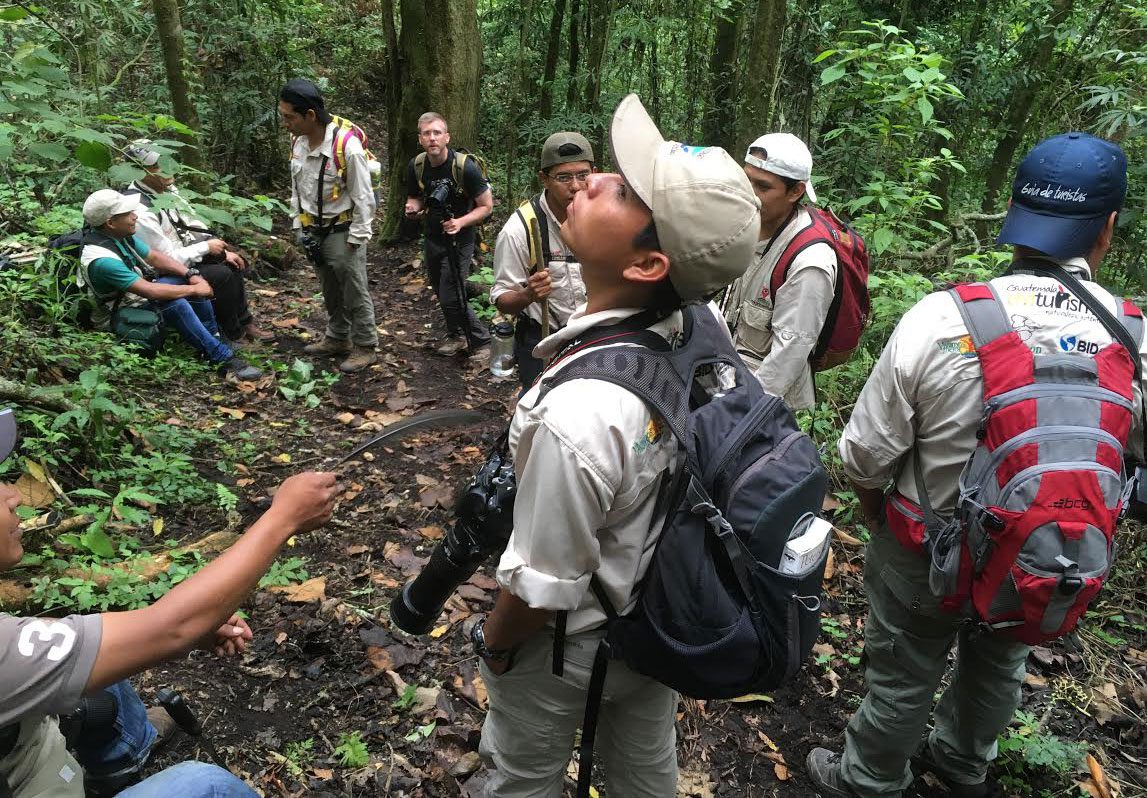
Iliff’s squad draws three members from the Petén Birders Club, a collection of skilled birders many of whom guide tourists in nearby Tikal National Park. They’ve helped Team Sapsucker pin down special birds like nesting Northern Potoos, plus American Pygmy Kingfisher and Black-throated Bobwhite (these last two were lifers for one or more of the Sapsuckers). While the locals provide expert knowledge on some of Guatemala’s most coveted birds, Iliff says, he and team members Ian Davies and Tim Lenz have been able to pay them back with help on migrants, such as the notoriously similar Baird’s and White-rumped Sandpipers and Eastern and Western Wood-Pewees, as well as the many subtly different warbler chip notes. During downtime, Sapsuckers and club members trade eBird lists and demonstrate the Merlin Bird ID app, newly expanded to include the Yucatán Peninsula, and available in both English and Spanish.
Looking ahead to the day, Iliff says, they’re planning to bird slowly and comprehensively. Whereas U.S. big days are all about driving hundreds of miles to link together disparate regions, “this is about birding one area in a lot of depth and hitting a lot of the really subtle habitat changes in the area,” he says. On Thursday morning the team started birding at 3 a.m. in Tikal. They birded three habitats—deep forest, seasonally flooded “bajo” forest, and the clearings around the Tikal pyramids—and tallied 110 species after covering just 3 miles on foot in 7 hours.
The Belize team, headed by Andrew Farnsworth, Steve Kelling, and Brian Sullivan, has been exploring Black Rock Lodge and Chan Chich, finding tropical forest species like Black Hawk-Eagle, Rufous-tailed Jacamar, and Red-legged Honeycreeper. When the three teams put their lists together, they’re shooting for a combined total of 300 species—and with luck that will enable the Cornell Lab to meet its $475,000 fundraising goal. It’s the Lab’s biggest fundraiser of the year, and donations help us carry out our science and conservation work.
Are there any species the teams are worried about getting? Iliff says he’s crossing his fingers for one of the hardest birds in all of Guatemala: Northern Cardinal. “It’s literally at its southern range limit here,” Iliff says, but the local guides know of a couple of spots they can try first thing in the morning.
Just in case their luck doesn’t hold, Iliff hopes some U.S.-bound birders can pick up the slack: “We’ve got to make sure at least one American goes out on Saturday and finds a cardinal,” he says, “Because it’s up in the air for us.”

All About Birds
is a free resource
Available for everyone,
funded by donors like you
American Kestrel by Blair Dudeck / Macaulay Library
